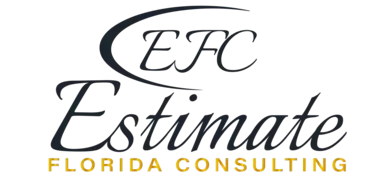How to Do a Real Estate Company Valuation?
Valuing a real estate company isn’t the same as valuing a single building or preparing a construction estimate. A company is a moving target: it earns money from rents and fees, it holds land and projects, and it operates with real people, plans, and risks. A good valuation looks at how that whole machine creates value, taking into account what the market would actually pay.
First: Understand the Concepts of Fair Market Value and Normalization
That market reality as mentioned in the introduction is called fair market value: the price a willing buyer and a willing seller would agree to, with no pressure and with reasonable information on both sides. Any spreadsheet is only a theory until it lines up with fair market value.
Understanding the concept of fair market value is essential for any business valuation. Failing to do easily so leads to inflated or fantasy numbers, with no or little connection to reality.
Also, no matter which valuation method you use, you will need to work with clean, normalized numbers. That means scrubbing the financials for one-offs, such as aligning owner pay and assets with market levels, and making sure routine maintenance and capital needs are properly reflected.

At your disposal you have several so-called valuation approaches to choose from: the income approach, the asset approach and the market approach.
Now, let’s uncover how these approaches work in real estate company valuations:
The Income Approach: Earnings Power First
When a company earns steady money from operations, think REITs, property managers, or stabilized developers, the Income Approach is usually the best lens.
A simple way to see today’s value is capitalization of earnings: take those normalized earnings and convert them to a value using a cap rate that reflects the company’s real risks, such as lease rollovers, tenant mix, leverage, exposure to construction, and the strength of leadership.
If you expect earnings to change, perhaps because new leases are coming, spaces need re-tenanting, or developments are about to deliver, then it helps to look forward with a Discounted Cash Flow. DCF projects cash in and out over time and brings it back to today. It’s useful, but only if the assumptions are grounded in reality: timelines, absorption, downtime, tenant improvements, leasing costs, and a sensible exit.
Unfortunately, off-the-shelf calculators can’t see the specifics of your business, so understanding the pipeline and the people behind the plan is what keeps the math honest. This is why it always pays off to engage a professional business valuation company to uncover what is really going on within the business.
The Asset-Based Approach: What the Portfolio is Worth
Some companies are best viewed asset-first. The Asset-Based, or Net Asset Value (NAV), Approach asks a simple question: what are the properties worth today, and what’s left after paying the debts?
Each asset is brought to market value, obligations are netted out, and the result is equity value for the enterprise. It’s a natural fit for holding companies and land banks.
Still, details matter. Book values can be stale, projects under construction need credible cost-to-complete numbers, and items like entitlements or special assessments can move value meaningfully.
Broad averages, like assuming one cap rate for an entire portfolio, tend to blur the differences that actually drive value.
The Market Approach: Reality Checks and Investor Sentiment
The Market Approach acts as a reality check. It looks at how similar companies are being priced right now, whether in public markets or recent transactions.
If an operator like yours trades at certain earnings or EBITDA multiples, or asset-heavy firms like yours tend to sell near a particular discount or premium to NAV, that helps anchor expectations.
The trick is choosing truly comparable peers: similar assets, locations, leverage, and development exposure, and remembering that headline deal prices can hide items like earn-outs or special terms.
Used well, the market view keeps your valuation aligned with fair market value, not just theory.
Combining Valuation Methods
In practice, professionals often blend these views. An operator might lean on the Income Approach and cross-check with the Market Approach. A holding company may anchor on NAV and then see how public peers trade.
How methods are combined shift with the business model and the quality of information, and the outcome is usually a range, not a single magic number. That’s normal. Ask five qualified appraisers and you may get five different answers.
Remember: The “right” number is the one a real buyer and seller can actually agree to.

